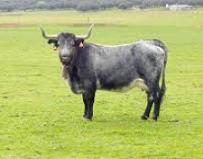Before entering fully into establishing the meaning of halter, it is necessary to know its etymological origin. In this case, we have to state that there is not one clear theory but several, among which we can highlight the following:
-Some indicate that it comes from Pan-Roman, specifically from “capistrum”, which can be translated as “harness”. This word is, in turn, the result of the sum of two others: the verb “capere”, which can be translated as “grasp”, and the suffix “-trum”, which is instrumental.
-Other theories about its etymological origin determine that it comes from the Latin “caput”, which is synonymous with “head”.
The concept can be used to refer to an ox (a bull that has been castrated) that is used to guide cattle in the field or for other purposes.
 The halter, in this frame, is a male specimen of the bovine species Bos primigenius taurus that has been castrated so that it can be tamed more easily. Gentleness, however, is linked to the halter breed and not so much to castration. These types of animals are educated so that, in rural areas, they help man drive wild cattle.
The halter, in this frame, is a male specimen of the bovine species Bos primigenius taurus that has been castrated so that it can be tamed more easily. Gentleness, however, is linked to the halter breed and not so much to castration. These types of animals are educated so that, in rural areas, they help man drive wild cattle.
Halters are also used in bullfighting shows. With them, other bulls are guided to the corrals when, for some reason, they are pardoned or the fight does not take place. In a bull run , on the other hand, the halter can be used to open and close the herd, pointing the way to the other animals.
Other information of interest about this type of halter are the following:
-Among the breeds most used to obtain halters are the Berrenda in black and the Berrenda in red as well as the Morucha.
-Other tasks for which halters are used in the field is to change the enclosure of a herd of bulls or cows.
-When they are placed in the field next to the foreman and the horse on which that person is riding, their function is none other than to protect them from possible attacks by bulls.
-Two essential characteristics that halters must have are a cowbell hanging from their neck and also a color or coat different from that of the livestock in which they are located. These will help the manager not to confuse them with the rest of his livestock.
In the field of horse riding , on the other hand, a part of the bridle (the set of straps that is located on a horse's head to hold the bit) is called a halter. This halter is a rope that is tied to the neck or head of the horse to lead or secure it.
The term is sometimes used synonymously with sling . The sling is a very thin chain, made of silver, gold or other material, that is placed around the neck as an ornament .
